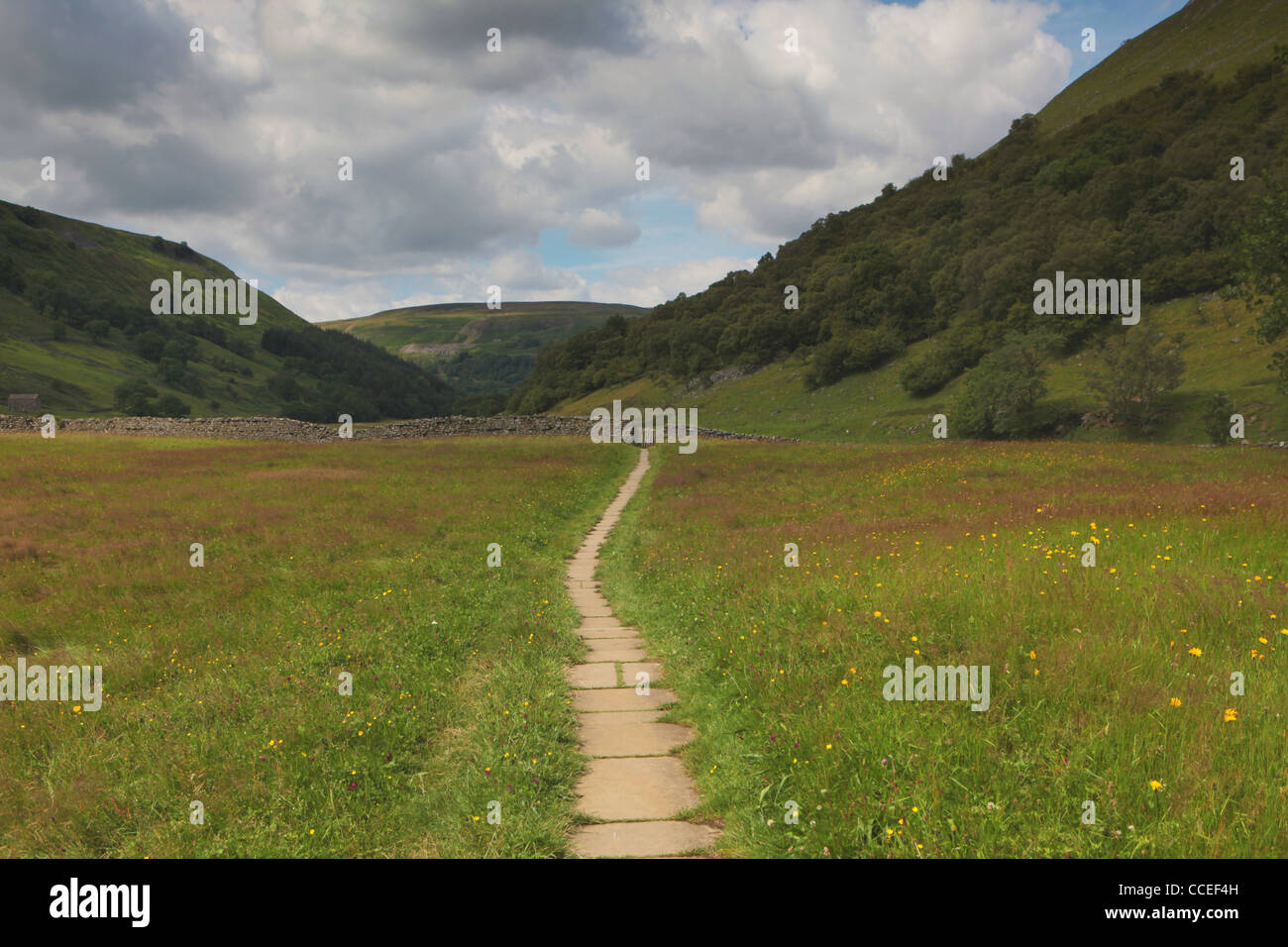A footpath near Muker in Upper Swaledale Yorkshire

Image details
Contributor:
Niall Ferguson / Alamy Stock PhotoImage ID:
CCEF4HFile size:
60.2 MB (2.3 MB Compressed download)Releases:
Model - no | Property - noDo I need a release?Dimensions:
5616 x 3744 px | 47.5 x 31.7 cm | 18.7 x 12.5 inches | 300dpiDate taken:
23 July 2011Location:
Muker Swaledale Yorkshire UKMore information:
Muker is a village and civil parish in North Yorkshire, England. Situated in Swaledale, one of the Yorkshire Dales, its name reflects its origin as a Norse settlement, derived from the Norse word "Mjor-aker" meaning "the narrow acre". The earliest recorded evidence for occupation takes the form of a skeleton found, with flints, on Muker Common in the early 20th century. Details suggest a burial of Bronze Age date. The location at the meeting of the River Swale and the Straw Beck with plenty of good meadow land around is most likely why the Vikings chose to settle here, giving them the opportunity to make a living out of mixed and pastoral farming. Agriculture continued to be the basis of economy in Muker until lead mining became more important during the late 18th century and the early 19th century. Muker was also a major centre for hand knitting during this period. The importance of these industries is reflected in the many cottages, workshops and other buildings constructed at the time. The church of St Mary the Virgin was built during the reign of Elizabeth I. A chapel of ease had stood on this site previously but in 1580 it was substantially rebuilt with a graveyard so that residents of Upper Swaledale no longer had to transport their dead all the way to the parish church in Grinton. The tower, nave and chancel all date from this period. With the decline of the mining industry, farming remained the main occupation. From the late 19th century Muker began to see an increasing number of visitors and the village is a starting point for walks in the area, with a great number of breath-taking public footpaths in Upper Swaledale. The traditional late 18th and early 19th century barns and drystone walls of Swaledale are the most characteristic feature of the landscape. The flower-rich hay meadows around Muker are of international importance and are carefully protected. Farmers receive grants which allow them to farm the land by traditional methods.